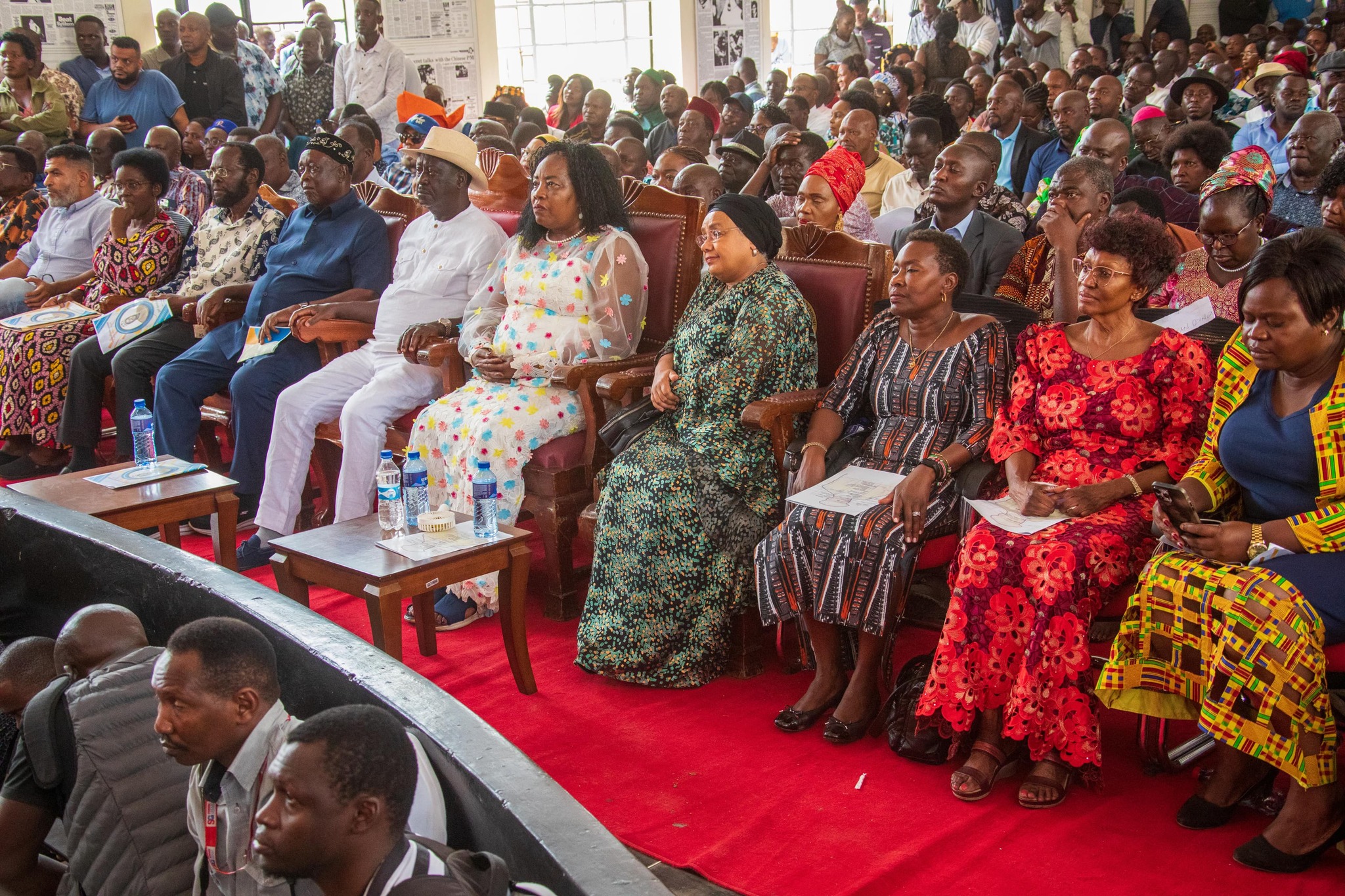For the love of God, I had no idea Jaramogi could make such dance moves when talking to Kenyans and sharing a moment of fun with them.
I know the old man a little bit because when I was a teacher at Nyamira Girls High School which is next to Jaramogi’s home in Kang’o Ka Jaramogi, I was housed in his home which he built when he was Kenya’s Vice President, and he donated that house to Nyamira school to house teachers.
We lived there the two of us and it is one of the best places I have lived in all my life.




That is the leader Kenya had and he lived from 1911 to January 20, 1994.

Jaramogi’s fight for an independent and free Kenya and Africa goes way back from his days as a student at Maseno High School when he rejected any English or European name and later became known as Jaramogi Ajuma Oginga Odinga.
Here is Jaramogi as Kenya gets its independence from British brutal rule and he is there with the key leaders like a lively-looking Jomo Kenyatta and Nyakech wuod Owila and the very smart Achieng’ Oneko. Kenya was looking good and the future looked promising only for Kenyatta to ruin everything and become not only a dictator but a killing thug and land grabber as well.

In his book “Not Yet Uhuru” published in 1967 Jaramogi explains the origins of his political life and resistance as a Kenyan when he was part of the founders of the Young Kavirondo Association in 1922.
The memorandum was drafted at a public meeting at Lundha in Gem on January 13, 1922. The meeting was attended by a multitude by colonial standards as well as 11 chiefs from the Luo and some representatives from the Luhya community who were being invited into YKA.
The meeting resolved the memorandum be sent to Nairobi. It made the following demands to the British Commissioner in Nyanza;
- We want to have an organization and a President in our country.
- We want the poll tax to be decreased.
- We want the District Commissioner, when he comes to collect poll tax let him not take our men to carry the money to Kisumu; he must use his own men.
- When the District Commissioner comes on tour he must not ask us to feed him and his men with our cattle or our eggs.
- We don’t want forced labour, i.e to work on the roads for no pay
- We want our Chiefs to have power.
- We want better salaries for the Chiefs.
- We want better education
- We are against the young people being sent to work on the farms.
- We do not like the way we are being punished, canned for minor offenses.
I have always wondered why Jaramogi’s book “Not Yet Uhuru”, which I have with me right now, has not been nominated for the Nobel Prize. It is authentic, original, and talks of great life and battles like few we have seen in the history of our people.

As of now, this is the great part of the Jaramogi legacy we have seen in media reports:
“Several leaders, scholars, and professionals on Saturday gathered at Kisumu’s Ofafa Social Hall for the 30th memorial of the late Jaramogi Oginga Odinga.
ODM Party leader Raila Odinga led his family in the day-long memorial that was attended by among others Governors, MPs, and former First Lady Margaret Kenyatta.
Jaramogi’s memorial started at the St. Stephens ACK Church in Kisumu where family friends and relatives gathered for morning prayers in a church said to have had its foundation stone laid by the late Jaramogi Oginga.
After the church service, a procession followed to Ofafa Hall in Kisumu where all were gathered.
Family members remembered the late Jaramogi as a family man who laid a strong family foundation despite harsh political times during his political life.
“Mzee Jaramogi was a strict father,” Mama Ida said.
“If you want to see Jaramogi alive, look at me standing hee,” Ruth Odinga added.
Raila Odinga remembers his father as a strict man who wanted the best for his children.
“He was very concerned about us every day…he was very strict to us as his children,” Odinga said.
Odinga told those who gathered in Kisumu that his late father loved education and championed for the same in his backyard.
The relationship between Jaramogi and the country’s first President Jomo Kenyatta was part of the memorial with those gathered taken down the memory lane.
Leaders who attended the memorial also remembered the late political icon as a man who shaped the country’s politics to date.









